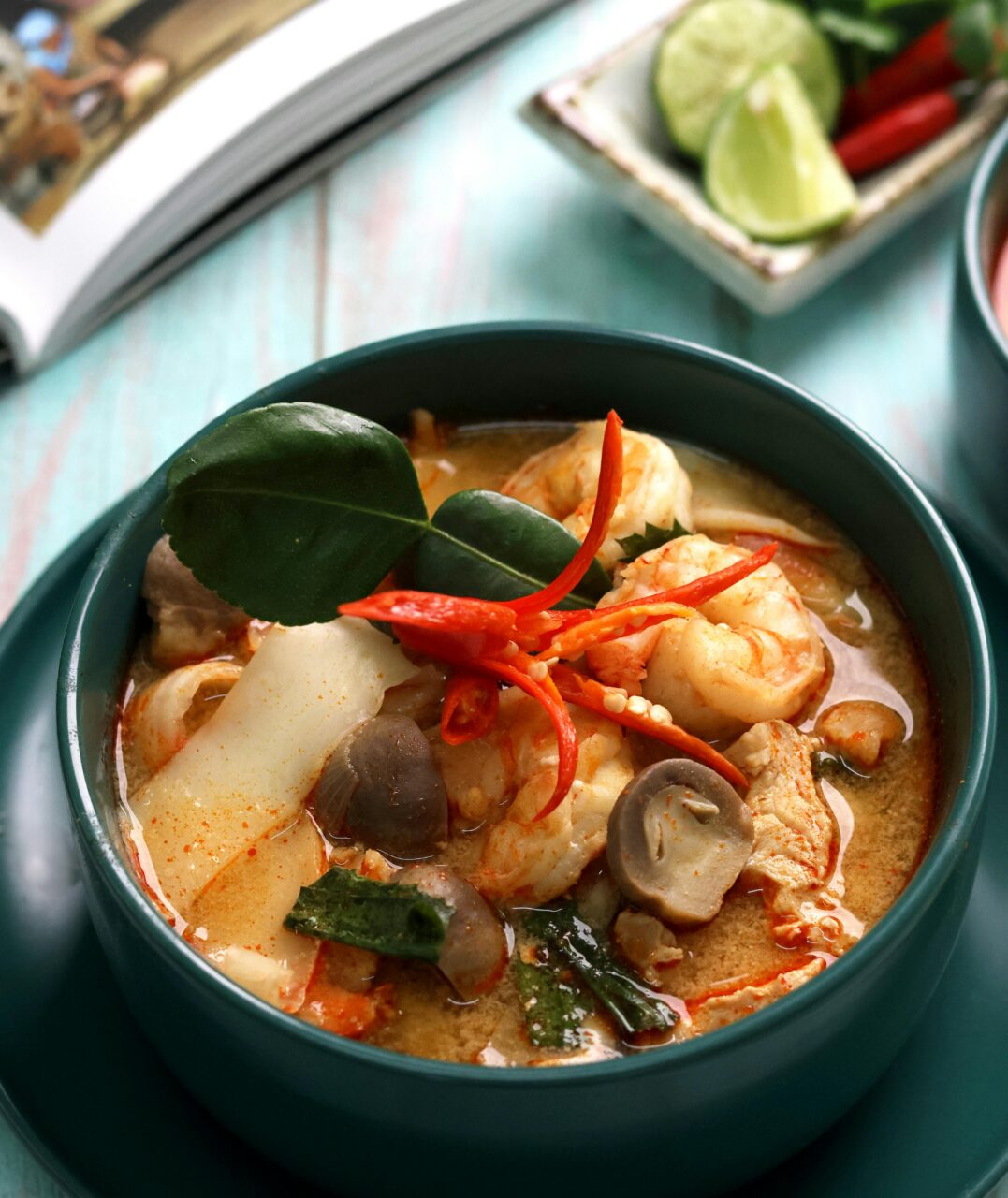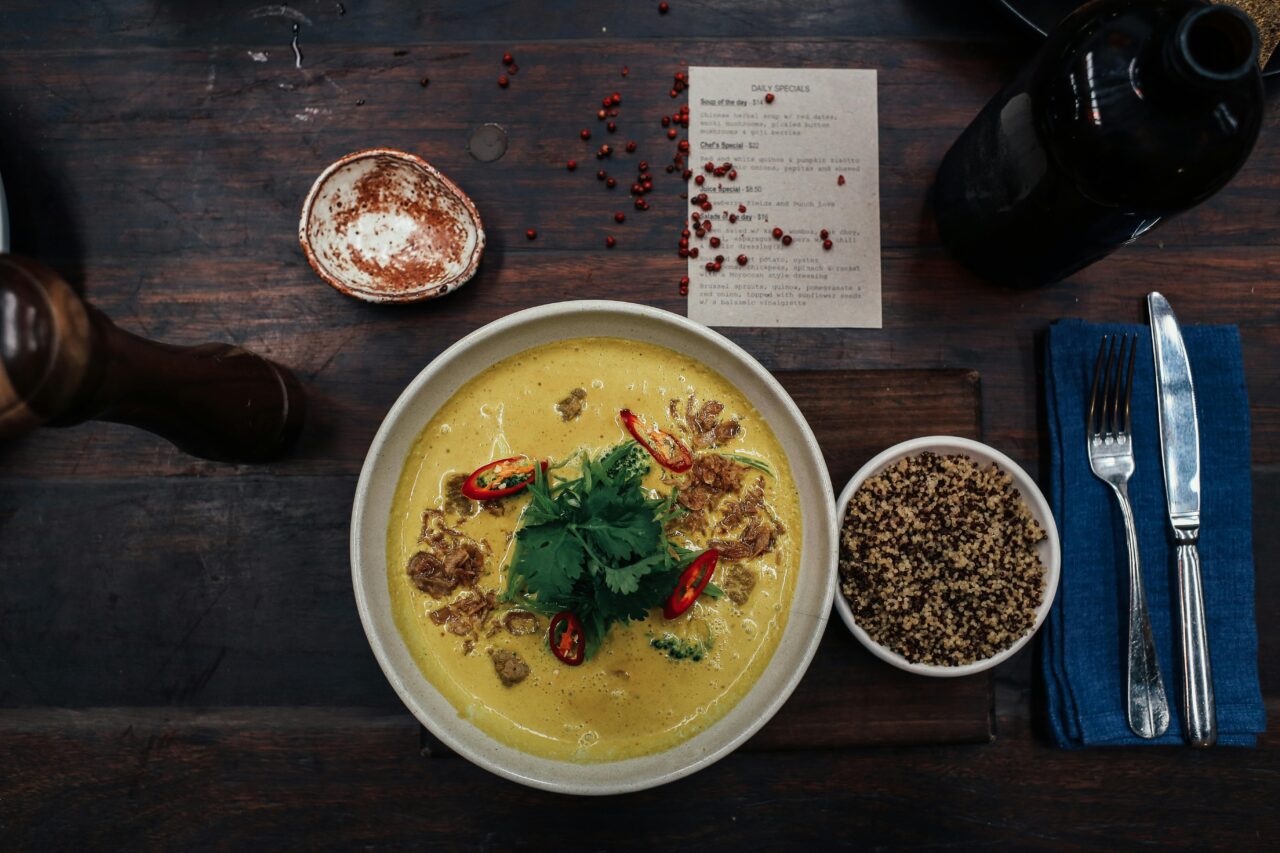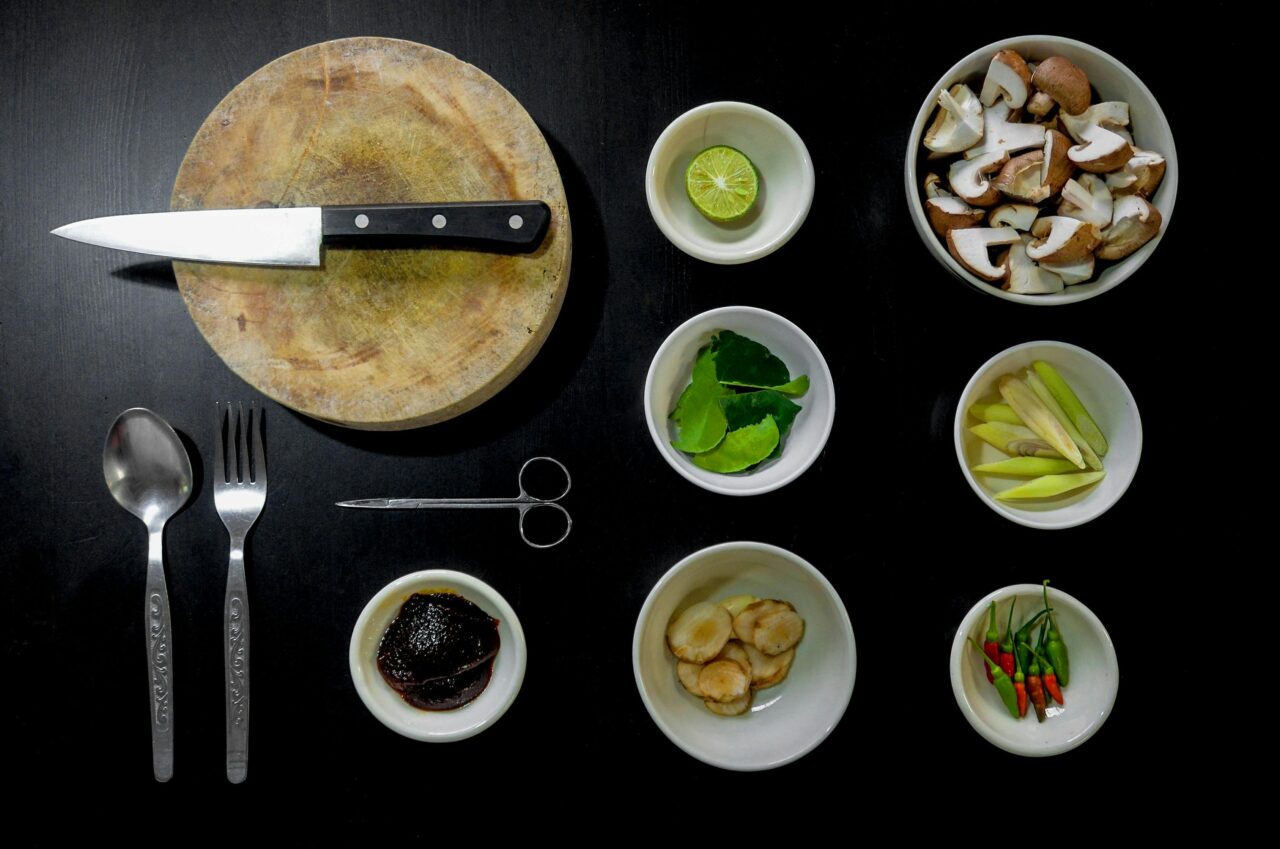Nederlands
English
Deutsch
Français
Lime leaves, also known as kaffir or makrut lime leaves, are a key ingredient in Southeast Asian cooking. Their intense citrus aroma and distinctive double-leaf shape bring a fresh, vibrant flavor to countless dishes. While fresh lime leaves can be difficult to find in the Netherlands, frozen ones make a great alternative, preserving their unique taste just as well. In this article, we’ll take a closer look at this aromatic staple and how to use it in your cooking.
What you’ll learn in this article:

Lime leaves have been a staple in Asian cuisine for centuries. They come from the kaffir or makrut lime tree (Citrus hystrix), a small citrus tree native to Thailand, Indonesia, Malaysia, and Vietnam.
In Thai cooking, lime leaves have long been used to add a bright, citrusy kick to dishes. They’re a key ingredient in classics like Tom Yum soup and various curries—without them, these dishes would lose their signature fresh and aromatic flavor. The fragrance and taste of lime leaves are far more intense than those of a regular lime or lemon.
It’s no wonder these leaves have gained worldwide popularity among chefs and home cooks seeking authentic Asian flavors. They’re available fresh, dried, or frozen, with frozen leaves being a great alternative when fresh ones aren’t an option.
Kaffir lime leaves are easy to recognize by their unique “double” shape. If you look closely, you’ll notice that each leaf is actually made up of two connected parts, almost like an hourglass. They have a deep green color, a glossy surface, and a sturdy texture, which helps them hold their aroma well.
When you tear or crush a lime leaf, it releases a powerful citrus aroma that’s both fresh and slightly floral. The flavor is just as distinctive, a blend of lime and lemon with a subtle spicy note. Because of its intense taste, lime leaves are used more like a herb or spice rather than a vegetable. They add a unique, refreshing flavor to dishes that’s hard to replicate.
The kaffir lime tree is native to tropical Southeast Asia and grows best in warm, humid climates. It typically reaches about one and a half meters in height.
In countries like Thailand, Indonesia, and Malaysia, the tree is grown for both its leaves and fruit. It thrives in full sunlight and well-draining soil, needing regular moisture but not too much, as it can’t tolerate soggy conditions.
Since the kaffir lime tree is evergreen, its leaves can be harvested year-round. The leaves are picked every few weeks, which encourages the tree to keep producing new ones. For export, lime leaves are often frozen right after harvest to ensure their aroma is preserved.

Lime leaves are commonly used in many Southeast Asian cuisines, particularly in Thai, Indonesian, Malaysian, and Vietnamese dishes. Here are some popular ways they’re used:
Lime leaves come in several forms: fresh, dried, and frozen. Each type requires a different storage method:
Fresh lime leaves can be hard to find outside of Asian countries. If you’re lucky enough to get them fresh, store them in a damp kitchen towel inside a sealed plastic bag in the fridge. This will keep them fresh for about a week.
For longer storage, you can freeze fresh lime leaves. First, wash them, dry them thoroughly, and lay them out in a single layer on a baking sheet. Freeze them like this, then transfer them to an airtight bag or container. This way, they can last for several months.
Frozen lime leaves are a great alternative to fresh ones and retain almost all of their flavor. Store them in their original packaging or in a well-sealed container in the freezer, where they’ll stay good for up to a year.
The best part is, you usually don’t need to thaw frozen leaves. You can add them directly to soups and curries, or thaw them briefly if you want to chop them.
Dried lime leaves lose some of their aromatic intensity but are still perfectly usable. Store them in an airtight container in a cool, dark place, and they’ll stay good for up to a year.
To use dried lime leaves, simply soak them in warm water to rehydrate, or add them directly to liquid dishes like soups and curries. You may need to use a bit more dried leaves to achieve the same level of flavor.

Lime leaves are mainly used to flavor dishes rather than as a main ingredient, so they don’t provide a significant amount of nutrients. However, they do contain a few beneficial ones:
Lime leaves are a source of vitamin A, several B vitamins, and important minerals like calcium, iron, and potassium. They also contain folic acid. That said, since lime leaves are typically used to infuse flavor and are not always eaten, the amount you consume is quite limited.
The oils in lime leaves, such as citronellal and limonene, have antioxidant properties. These can help protect the body from harmful external factors.
Lime leaves contain fiber, but since they’re usually used in small amounts or removed from dishes before eating, they don’t contribute much to your fiber intake.
In traditional medicine, lime leaves are used in various ways:
At Mooijer, we offer premium frozen lime leaves, perfect for authentic Asian dishes. Our lime leaves are carefully selected and frozen immediately after harvest to preserve their rich aroma.
Frozen lime leaves are a great alternative to fresh ones, retaining almost all of their flavor and fragrance. They’re easy to use: simply add them straight from the freezer to soups, curries, and stews, or let them thaw briefly if you want to chop them.
For reliable sourcing of high-quality lime leaves, Mooijer is the place to go.